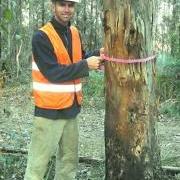If a tree talks in the forest can you hear it?
 What if we could identify plants not by sight but by sound? It’s not entirely fanciful: every plant makes a unique set of sounds, an auditory signature, influenced by its physiology. Source: Gizmodo
What if we could identify plants not by sight but by sound? It’s not entirely fanciful: every plant makes a unique set of sounds, an auditory signature, influenced by its physiology. Source: Gizmodo
But these sounds, usually in the ultrasonic range, are not for our ears.
Biologists have long known that air and water moving through a plant’s vascular system make what we might think of as heartbeats, hiccups and coughs.
A Swiss project simply called “trees” aims to investigate the acoustic emissions of plants.
Just as a doctor might put a stethoscope up to your chest, listening in on plants could be one way to monitor their well-being.
The pops of a membrane rupturing in a tree’s vascular system could be a sign of how well plants are responding to drought.
The project is a collaboration between the Institute for Computer Music and Sound Technology and Swiss Federal Institute for Forest, Snow and Landscape Research, and it is as much art as science.
A surround sound installation of tree recordings was exhibited in San Francisco in 2012. If you closed your eyes standing in that thicket of microphones, you’d be transported into an auditory forest, though not necessarily a familiar one.
Instead of rustling leaves or snapping twigs, you’d hear snaps, clicks and hisses. We don’t have a whole forest, but here are the auditory emissions of a Scots pine.
Trees may not leap or fly, but they’re dynamic in their own quiet way. It’s remarkable, if you think about it, that most of the wood’s mass comes from carbon atoms a plant pulled out of the air – out of thin air!
These recordings give voice to usually silent processes, reminding us of the subtle dynamism of trees.



